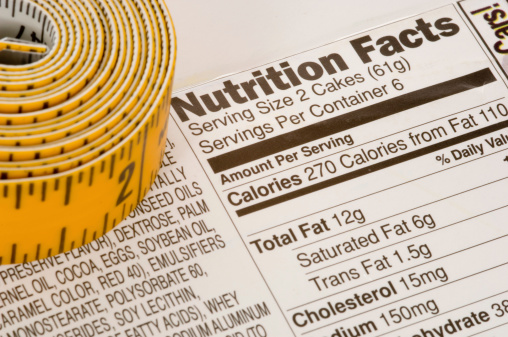
FDA seeks comment on its determination trans fats are unsafe and should be banned.
For decades, the food industry has used artificial trans fats—the primary component of partially hydrogenated oils (PHOs) in most processed food—as a food additive to extend shelf life and flavor. However, in light of scientific findings that PHOs pose serious public health concerns and are no longer “generally recognized as safe,” the Food and Drug Administration (FDA) has announced that a potentially stricter regulatory regime for nutritional content will likely follow.
Some trans fats naturally occur in foods, like meat and dairy, but a majority of processed frozen, canned, and baked foods—from doughnuts to pasta mixes—contain added trans fats. Added trans fats have been part of the U.S. food supply since the early 1900s. Mandatory trans fat labeling did not occur until 2006, even though for nearly two decades researchers suspected that these fats increase “bad” LDL cholesterol, decrease “good” HDL cholesterol, and contribute to heart disease and diabetes.
Along with public health advocates, institutions, such as the American Heart Association and Institute of Medicine, have warned that given American’s intake of naturally occurring trans fats in meat and dairy products, virtually no amount of added trans fats should be added to a diet. But, with the prevalence of added trans fats, experts suggested that Americans limit daily trans fat intake to less than two grams. After labeling requirements went into effect, trans fat consumption by the average American decreased from almost five grams a day in 2003 to about one gram a day in 2012, according to the FDA.
Some food chains and manufacturers have since voluntarily reduced or eliminated trans fats in their products; however, trans fats are still commonly found in all kinds of readily available foods. According to the Centers for Disease Control and Prevention (CDC), eliminating PHOs and trans fats from Americans’ diets could prevent up to twenty thousand heart episodes and seven thousand heart attacks each year.
In light of this and other scientific evidence indicating serious health concerns associated with trans fat consumption, FDA regulators now tentatively believe that the consumption of any trans fat amount may no longer be safe.
There are various estimates of the potential industry impact of a potential ban. Due to a seventy-three percent trans fat reduction in the food supply, “most of the heavy lifting has already been done,” Michael Jacobson, executive director of Center for Science in the Public Interest, reportedly said. Some market researchers speculate that as the food industry attempts to eliminate or substitute trans fats, certain food prices will increase and other foods will be discontinued.
Currently, FDA regulatory guidelines allow the food industry to list food products as “0g trans fat” when they actually contain up to 0.5 grams trans fat. As a result, public health advocates and representatives laud the FDA’s determination, but also hope for further revision of requirements for listing food additive and nutritional information on food labels.
In contrast with responses to other controversial health policies and regulations, initial reactions to the government’s potential trans fat ban have generally appeared to be supportive; but, recent surveys indicate that Americans remain divided over whether the government should be involved in consumer food choices. Jeffrey Levi, executive director of Trust for America’s Health, reportedly expressed that “there are other areas where regulation is sort of stuck—everything from nutrition labeling to food safety to the tobacco regulations that have not seen the light of day.”
In particular, some health experts reportedly anticipate that the FDA’s interest in regulating trans fats may usher in a new era of food additive regulation and additional support for future nutritional labeling. Historically, the agency has apparently focused on food additives linked to acute injury and death, but some argue a ban on trans fats may effectively extend regulation to additives—like sodium or sugar—that contribute to slowly killing chronic diseases.
In the meantime, the FDA recommends consumers to continually monitor saturated fat, cholesterol, and trans fat levels. “Choose the product that has the lowest combined amount of these nutrients,” Dennis Keefe, Director of its Office of Food Additive Safety suggested.
Yet, even with these additional food regulations, being an informed consumer may require an increased level of awareness and vigilance. A potentially salient issue for consumers is whether current labels even accurately reflect nutritional content and allow for effective monitoring.
Foods high in saturated and total fats, as well as calories, still contribute to numerous health concerns, including obesity. FDA guidelines for nutrition labeling, which call for transparency about calorie, sugar, total fat, and sodium information, allow food products to be as much as twenty percent above actual reported values. For example, many 500 or 1000-calorie food products may be reported as 100 or 200 calories less than the actual product’s total caloric intake and yet remain in compliance.
The agency is currently seeking public comment on its preliminary determination of PHOs safety, especially to determine how a trans fat ban might affect businesses if PHOs are phased out of the food supply. If the FDA’s determination is finalized, PHOs and trans fats would not be allowed in the U.S. food supply without the industry scientifically demonstrating that they are safe to consume.
“The timeline would be based on the comments we get. Given the public health impact, we want to move as quickly as we can,” the FDA’s Deputy Commissioner for Foods, Michael Taylor, reportedly stated.



